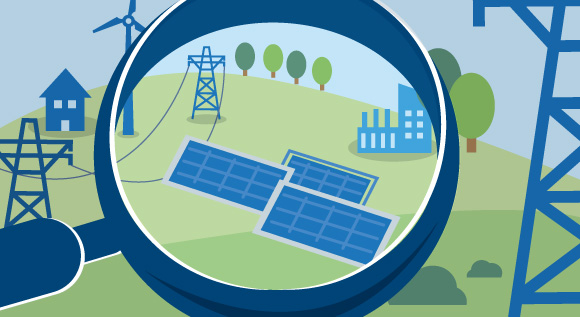What is the Social Climate Fund?
The expansion of the EU Emissions Trading Scheme (ETS) to include buildings and transport is regarded as a milestone for climate action. To offset the financial burden of carbon pricing for low income households, the EU has set up a Social Climate Fund.
 © Federal Ministry for Economic Affairs and Climate Action (BMWK)
© Federal Ministry for Economic Affairs and Climate Action (BMWK)
The background to this is the agreement reached by the European Parliament, the Council and the European Commission at the end of December 2022 for a new Emissions Trading Scheme (ETS) to be introduced for the buildings and transport sectors and for process heat in small industry. The EU has set itself the goal of reducing net greenhouse gas emissions by at least 55% by 2030. The Union wants to be greenhouse gas neutral by 2050.
Why the Climate Social Fund is important
Under the new ETS, consumer prices will rise due to the additional carbon pricing for fossil fuels used for driving and heating. If consumers cannot afford fossil-free alternatives, they will have to bear the rising carbon costs in the future. According to the European Commission’s calculations, however, more than 34 million people in the EU already live in energy poverty. Rising energy prices and additional carbon costs are an additional burden for them.
Control mechanism keeps prices for allowances down
A control mechanism is therefore ensuring that prices for allowances do not rise too quickly in the first years. If the price climbs above €45 per tonne of CO2, additional allowances will be auctioned to limit the burden of costs for final consumers in the first few years. The €65 million Social Climate Fund is to also mitigate additional costs for disadvantaged households, micro-enterprises and transport users. The fund is to support measures for and investments in more efficient buildings and lower-emission mobility in particular. It can also be used to finance temporary, direct income assistance for particularly vulnerable households.
How the Social Climate Fund is financed
Under the new ETS for buildings and transport, fossil fuels used for road transport and heating will be assigned a carbon price. Companies selling these fuels for the first time must annually buy and submit allowances at this carbon price for the emissions they cause. Some of the revenue from the selling of these allowances feeds into the Social Climate Fund. The funding is then distributed among the EU Member States.
Climate action and cushioning its social impact go hand in hand
A corresponding allocation key for the total funding will ensure solidarity-based balance across Europe between all Member States. The EU Member States have until 2025 to demonstrate how they will use this funding in national social climate plans. In addition, the States are to contribute their own budgetary resources to the measures.
In the establishment of the Social Climate Fund (over the period 2026-2032), climate action and cushioning its social impact go hand in hand. The fund is considered an important building block of a socially just transition.

